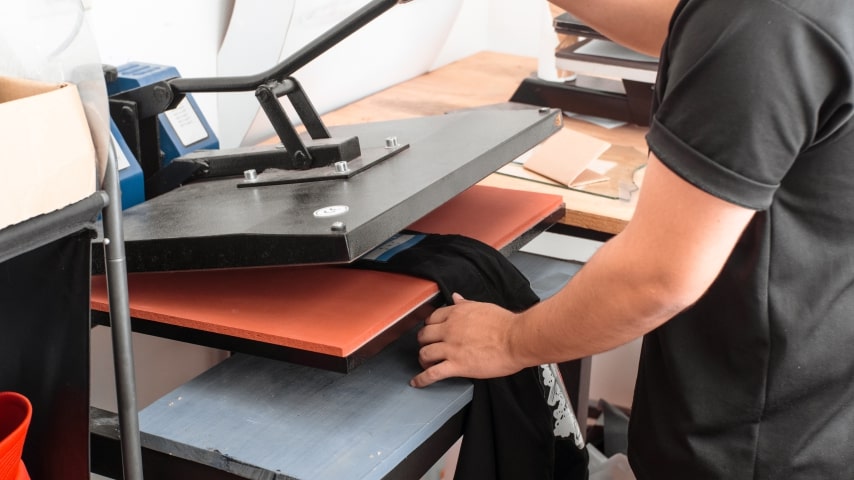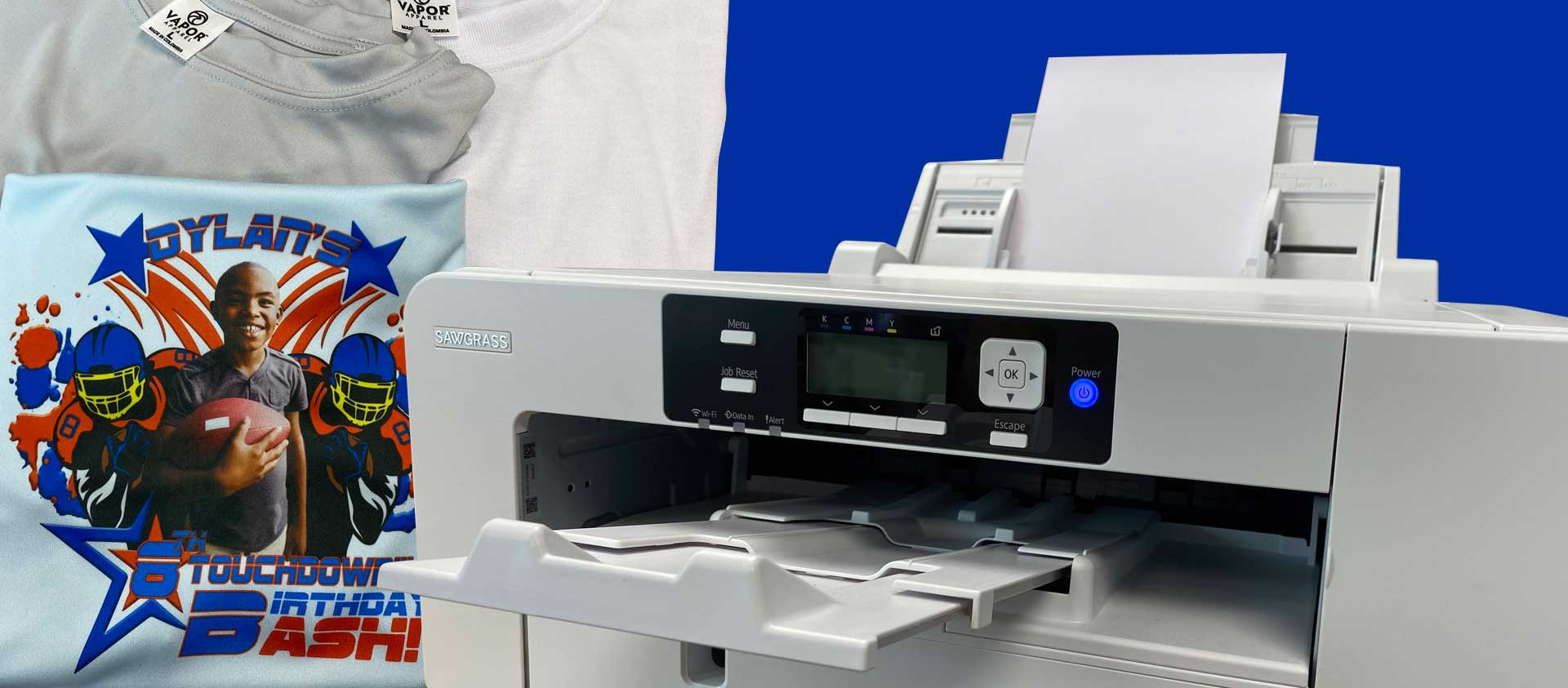The Reason Why DTF Printing is the Future of Custom Garments Manufacturing
The Reason Why DTF Printing is the Future of Custom Garments Manufacturing
Blog Article
A Comprehensive Guide to the Various Kinds Of Towel Printing Techniques
Starting an exploration of towel printing methods reveals an interesting crossway of tradition and development. Each technique, from the meticulous workmanship of block printing to the quick efficiency of screen printing, offers special purposes and uses distinct advantages. Digital printing's adaptability and environmental awareness stand in plain contrast to the swift personalization of warm transfer printing. Color sublimation printing mesmerizes with its capacity to generate vivid, enduring designs on artificial materials. To truly understand the nuances and possible applications of these varied techniques, a deeper investigation is important.
Block Printing
Block Printing, one of the earliest methods of textile decor, has a rich history that goes back to old civilizations. Coming from China around 220 A.D., this strategy later spread to India and at some point Europe. The process involves carving elaborate designs right into wood blocks, which are after that dipped in color and pressed onto textile to create patterns. This approach is notable for its ability to produce highly detailed and repeated designs.
The precision and craftsmanship involved in block printing make it a labor-intensive process, yet it likewise permits a high level of customization. Craftsmens can produce distinct patterns by combining different blocks or varying the application of dye. This flexibility has actually contributed to the enduring appeal of block printing in both modern and standard textile design.
Block printing is particularly valued for its aesthetic qualities, consisting of the mild variants in pattern and color that result from the hand-printing process. These blemishes lend a special personality to every item, identifying it from mass-produced textiles. In spite of advancements in contemporary printing modern technologies, obstruct printing continues to be a treasured technique, commemorated for its historical relevance and imaginative worth.
Display Printing
Display printing, another prominent textile decoration method, has reinvented the sector with its effectiveness and adaptability. This approach entails developing a pattern, understood as a display, and using it to use layers of ink on the printing surface area. Each color in the design requires a separate display, which permits for intricate and vivid multi-colored prints.

Among the vital benefits of screen printing is its flexibility to numerous sorts of fabrics, consisting of cotton, polyester, and blends. This method is especially ideal for large-volume orders due to its cost-effectiveness and rate. The toughness of the prints is one more significant benefit, as the ink bonds well with the material, making certain resilient designs that stand up to numerous laundries.
Once dried out, the design is moved onto the emulsion-coated screen utilizing a UV light source. Ink is then pushed through the stencil onto the textile making use of a squeegee.
Screen printing is widely made use of in the fashion business, advertising items, and customized apparel. Its capability for top notch, detailed prints protects its standing as a cornerstone method in fabric printing.
Digital Printing
Digital printing has quickly become an innovative strategy in the fabric sector, leveraging advanced modern technology to generate high-resolution layouts directly onto material. Unlike typical methods, digital printing uses inkjet printers to down payment pigment or dye-based inks onto fabrics, making it possible for lively and intricate patterns with an exceptional level of detail and color accuracy.
One of the primary benefits of digital printing is its adaptability. This method permits for on-demand printing, which considerably decreases waste and lessens stock prices. Additionally, it supports brief runs and custom layouts, making it excellent for custom tasks and limited-edition collections. The elimination of displays and various other arrangement demands even more boosts effectiveness, lowering manufacturing time and labor expenses.
Additionally, digital printing is ecologically pleasant. DTF printing. It makes use of water-based inks and requires less water and energy compared to conventional techniques, aligning with lasting techniques. The accuracy of electronic printing also allows using a broader variety of materials, consisting of cotton, silk, polyester, and blends, ensuring flexibility across different applications
Warmth Transfer Printing
Just how does warmth transfer printing transform fabric design? This approach has brought significant developments by enabling detailed and dynamic layouts to be transferred onto a selection of textiles with impressive precision. Warmth transfer printing involves using heat and pressure to transfer a design from a particularly developed paper onto fabric. This procedure starts with printing the desired image onto transfer paper using specialized inks. Once the photo is printed, the paper is put onto the material and based on a heat press, which transfers the ink from the paper to the fabric.
Among the primary benefits of heat transfer printing is screen printing its ability to generate top quality, in-depth pictures quickly and effectively. It is particularly fit for small production runs and custom orders, making it a preferred option for individualized garments and advertising products. Furthermore, this technique is versatile, suiting various kinds of fabrics including cotton, polyester, and blends.
In addition, warmth transfer printing is reasonably cost-efficient compared to other techniques, as it calls for marginal setup and reduced initial investment - screen printing. This price, combined with its capacity for generating lively, sturdy prints, underscores its essential function in modern fabric layout

Dye Sublimation Printing
Dye sublimation printing, an innovative material printing strategy, offers unrivaled vibrancy and durability for layouts on different synthetic textiles. This method involves converting strong color right into a gas without going through a fluid state, allowing the dye to permeate the fabric perfectly. The procedure starts with publishing the design onto a special transfer paper making use of sublimation inks. The published transfer paper is after that put on the textile, and both are subjected to high heat and pressure utilizing a warmth press. The warmth creates the color to sublimate and bond with the textile fibers, producing a long-term, high-resolution print that withstands fading and splitting.
One of the key advantages of dye sublimation printing is its ability to generate continuous-tone prints with dynamic shades and intricate information. Unlike other printing approaches, the dye becomes component of the fabric as opposed to resting on top of it, leading to a soft and breathable surface. This technique is especially effective on polyester and other artificial materials, making it a preferred choice for sports apparel, banners, and home textiles. Furthermore, color sublimation is eco-friendly, as it needs no water and generates minimal waste, straightening with sustainable manufacturing techniques.
Conclusion
Block printing is respected for its artisanal top quality, while her explanation display printing is useful for high-volume production. Digital printing provides flexibility and environmental advantages, whereas warmth transfer printing is excellent for rapid personalization.
Each technique, from the thorough workmanship of block printing to the quick performance of screen printing, offers unique objectives and offers distinct benefits. Digital printing's versatility and official statement environmental awareness stand in raw comparison to the quick modification of warm transfer printing. In spite of developments in modern-day printing modern technologies, block printing remains a valued technique, celebrated for its historical importance and creative worth.
Dye sublimation printing, an advanced material printing technique, provides unrivaled vibrancy and durability for styles on various synthetic fabrics. Digital printing offers adaptability and ecological benefits, whereas heat transfer printing is optimal for rapid personalization.
Report this page